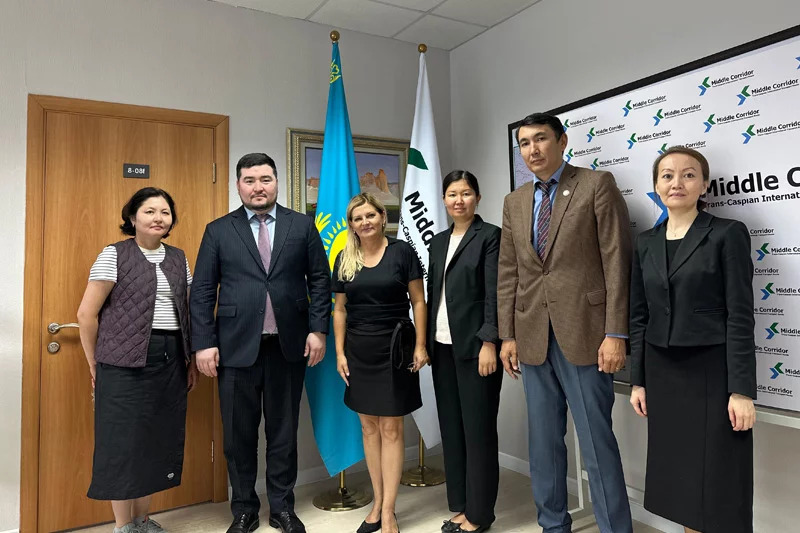ASTANA, Kazakhstan, August 16. Prospects for the development of the Middle Corridor have been examined by the Trans-Caspian International Transport Route (TITR, or the Middle Corridor International Association) and the United Nations Development Program, Trend reports.
Discussions took place at the headquarters of the TITR Association with the participation of Katarzyna Wawiernia, UNDP Resident Representative in Kazakhstan, and Aymgul Nurgalieva, Programme Analyst of the Effective Governance Department.
The meeting participants went over the importance of the Middle Corridor for the countries of Central Asia and the Caucasus.
The parties stressed the TITR Association's role in Central Asian infrastructure development and regional collaboration throughout the meeting. Environmental sustainability and inclusivity are fundamental to the TITR Association's improvement of transport infrastructure, economic sustainability, and social well-being. They also stressed the need to keep a lid on the environmental impact and make sure natural resources are used in a sustainable manner, including the use of renewable energy and cutting-edge digital technologies.
The Middle Corridor is a transportation and trade route that links Asia and Europe, cutting across multiple countries in the region. It is a different ballgame compared to the traditional Northern Corridor and Southern Corridor.
The route starts in China and crosses Central Asian countries such as Kazakhstan, Uzbekistan, and Turkmenistan. It then passes through the Caspian Sea, Azerbaijan, Georgia, and Türkiye before reaching Europe.
The Middle Corridor offers a land route that connects the eastern parts of Asia, including China, with Europe, cutting corners and avoiding the long way around the sea.







